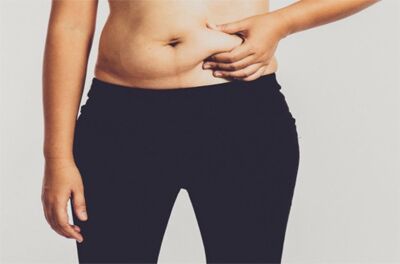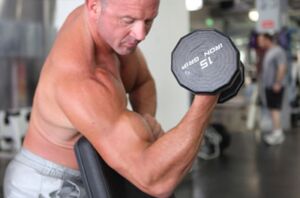Take your workout seriously and look good all the time As we continue to explore ways to eat healthily and live a healthier lifestyle, our next healthy diet advice are ways to keep your metabolism burning fat. We often hear about our metabolism and how it affects weight loss… and weight gain. Your Meta embolisms the process by which your body converts what you eat and drink into energy. During this complex biochemical process, calories in food and beverages are combined with oxygen to release the energy your body needs to function.

While it is true that some people seem to be able to lose weight more quickly and more easily than others, everyone loses weight when they burn up more calories than they eat. To lose weight, you need to create an energy deficit by eating fewer calories or increasing the number of calories you burn through physical activity or both.
You already know if you read our article on combination exercise that when you exercise, your metabolism gets boosted, leading you to burn calories and eat up your fat stores. What you may not know is after you finish your workout, your body is working to recover itself, which is when the afterburn effect takes place. This calorie and fat-eating phenomenon is more officially called “excess post-exercise oxygen consumption,” or EPOC
If you’re looking to burn extra calories and fat, if you’re looking to maximize your weight loss effects, these tips will increase your EPOC levels to burn more calories post-exercise.
Warm Up
 Warming up is used to prepare the body for activity. The main objectives are to increase heart rate and breathing, increase body temperature, and also psychologically prepare the body for exercise. The National Academy of Sports Medicine (NASM) recommends that a complete warm-up include both general and specific warm-ups. A
Warming up is used to prepare the body for activity. The main objectives are to increase heart rate and breathing, increase body temperature, and also psychologically prepare the body for exercise. The National Academy of Sports Medicine (NASM) recommends that a complete warm-up include both general and specific warm-ups. A
general warm-up includes activities and movements that are not necessarily going to be performed in your actual workout and should last approximately 5-10 mins at a low-to-moderate intensity.
Walking on a treadmill or using the elliptical machine before a resistance training workout is an example of a general warm-up. A specific warm-up involves movements that closely mimic those of the actual activity you will be performing. For example, performing push-ups prior to an upper-body resistance training session.
Increase your intensity

soreness, injury, and burnout. Start at a
light intensity if you’re new to exercising. Gradually build up to moderate or vigorous intensity.
Rather than worrying about the length of time you worked out, focus on the intensity. High-intensity workouts like a HIIT routine (high-intensity interval training) get your heart rate pumping quickly and efficiently. Alternatively, circuit training can provide a similar effect. Vigorous exercise puts more strain on the body, keeping the body burning calories for hours after the workout is over. Not only will you enjoy an increased EPOC level, but you may also lose weight faster, build muscle quicker, and increase your aerobic capacity.
The Department of Health and Human Services recommends these exercise guidelines for most healthy adults:
Aerobic Activity

activity a week. Even small amounts of physical activity are helpful, and accumulated activity throughout the day adds up to provide health benefits.
Here at Diet Rite, we have included this in our daily walks to increase intensity. Try holding your arms out to the sides for about 15 minutes or about ¼ mile. The resistance of gravity will increase the intensity of your walk. You will feel this move in your shoulders and in your back. We recommend trying this when you walk.
Strength Training

In addition to increasing your intensity, There are several benefits to strength training including:
- Maintaining Muscle Tissue.
- Increased Strength.
- Improved Bone Health.
- Controlling and removing Body Fat for good.
- Decreased Risk of Injury.
So try to incorporate strength training into your exercise routine.
Along the same lines and directly in line with strength training is
Lifting Weights

(BMR), BMP is the number of calories your body burns at rest. According to a review in Medicine and Science in Sports and Exercise, your BMR eats up a whopping 60–75% of your total daily calorie burn.

after a strength-training session than after a run or bike ride. “Cardio doesn’t cause the same stress on the muscle as doing a heavy lift, and that stress causes more turnover in the muscle that then causes a greater need for repair, This repair process uses more energy in the form of calories than a typical cardio session does. As a result, your post-workout calorie burn stays elevated longer. Clearly, we can see that lifting weights can be very beneficial to your weight loss as well as keeping the pounds off.
Opt for protein after a workout

Hair and nails are mostly made of protein, your body uses protein to build and repair tissues. You also use protein to make enzymes, hormones, and other body chemicals. Protein is an important building block of bones, muscles, cartilage, skin, and blood. This is what makes the Diet Rite System so good for you. The DRS is a protein-rich low-carb system. This allows you to feel fuller longer causing you to eat less and lose those unwanted pounds as well as the other important benefits we just mentioned Become a Diet Rite now.. You’ll thank yourself later
Eat healthy snacks between meals

rather than three. A second study found that switching from three daily meals to six did not boost calorie-burning or fat loss. In fact, the researchers concluded, eating six meals a day actually made people want to eat more. ( The DRS… need we say more)
However, having a healthy snack after workouts can keep your metabolism working longer. Additionally having healthy snacks between meals can reduce the feeling of hunger that so many people who diet suffer from. Here are just a couple of healthy snack ideas for you to try.
Apples

pressure, and pre-diabetes. It’s never too early to Diet Rite and it’s never too late to Diet Rite. Are you a Diet Riter?
Carrots

antioxidants. They are weight-loss friendly and have been linked to lower cholesterol levels and improved eye health. What’s more, their carotene antioxidants have been linked to a reduced risk of cancer. A bag of baby carrots and cold water is a perfect snack to keep hunger away, boost metabolism and help with weight loss. Try it!
The list of foods is pretty extensive, so rather than trying to include them all in this article, we will be writing another article soon about foods that boost metabolism and help burn fat. As always we try to include why it does it and how it does it without skimping on the explanation.
Till then, try these metabolism-boosting tips and watch the extra pounds melt away!

